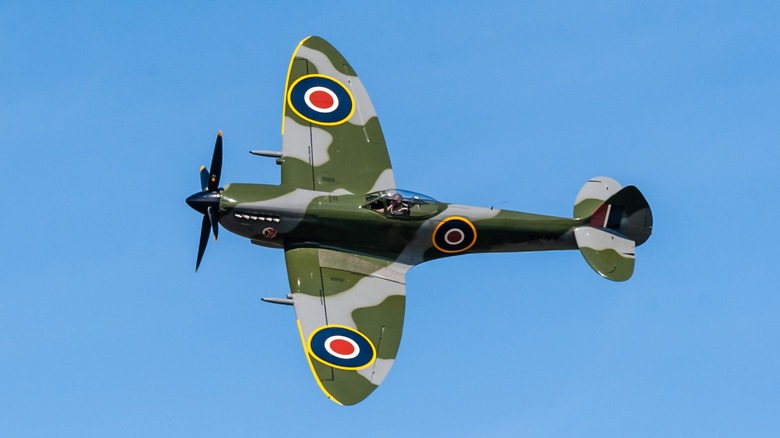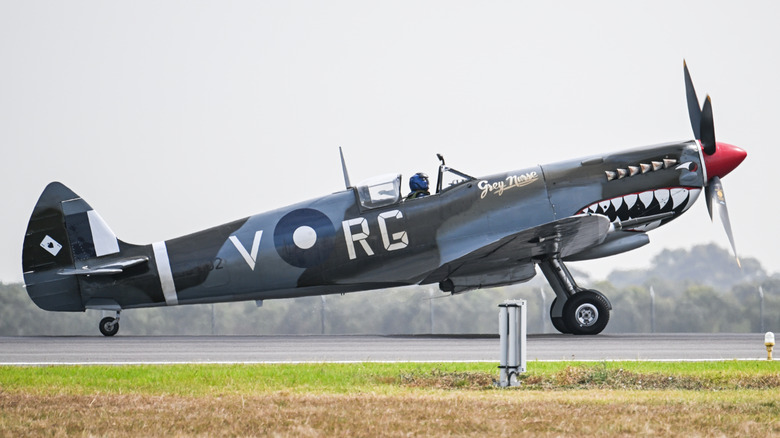How Many Spitfires Are Left And Are Any Still Capable Of Flying?
The Spitfire had its maiden flight on March 5, 1936 and began its service with the Royal Air Force (RAF) in 1938. There were only 400 Spitfires in service when World War II started. It was the only Allied fighter plane that was produced for the entire length of World War II. Thanks to its powerful Rolls-Royce Merlin V12 engine, the Spitfire could hit an average top speed of 363 mph and had a normal range of 991 nautical miles, which was reduced to 410 under combat conditions. There were a total of 24 variations, or Marks, of the Spitfire during its production lifetime.
The number of Spitfires that are left can be a difficult number to pin down. These will include those that are airworthy and those that are suitable only for static display, as well as those that might be in a transitory state that lies somewhere between un-flyable and ready for takeoff. It is generally agreed that a total of 20,351 Spitfires were built between 1938 and 1948. If you add in the Spitfire's naval variant, the Seafire, the total increases to over 22,000 aircraft produced.
The number of Spitfires left seems to be anywhere from 170 to 240, according to various estimates. These include those on static display, those that are being restored for either display or actual flight, and any that may be currently capable of flight.
Are any Spitfires still capable of flying?
There are a handful of Spitfires that are still capable of flying. Out of the Spitfires that have survived, the number of those that can fly is estimated to be around 55.
This is actually a great improvement over the situation in 1967, just 22 years after the end of World War II, when the makers of the movie "The Battle of Britain" were looking for Spitfires to use in their film. At that time, only 14 airworthy Spitfires existed in the entire world, and not every Spitfire owner wished to have their plane used. The film producers restored an additional three Spitfires for the film, so they would have enough for the flying scenes. Since then, the authors of a book on surviving Spitfires have documented an increase in their numbers, up to a calculated 282 Spitfires in all conditions as of 2024.
The extremely agile Spitfire was much more than an airplane to the people of Great Britain during those dark days of World War II. It was one of the most notable aircraft that fought in the Battle of Britain and prevented the Germans from unleashing aerial havoc on the residents of the island nation. The Germans were driven back, and the Spitfire became a symbol of British air power.

